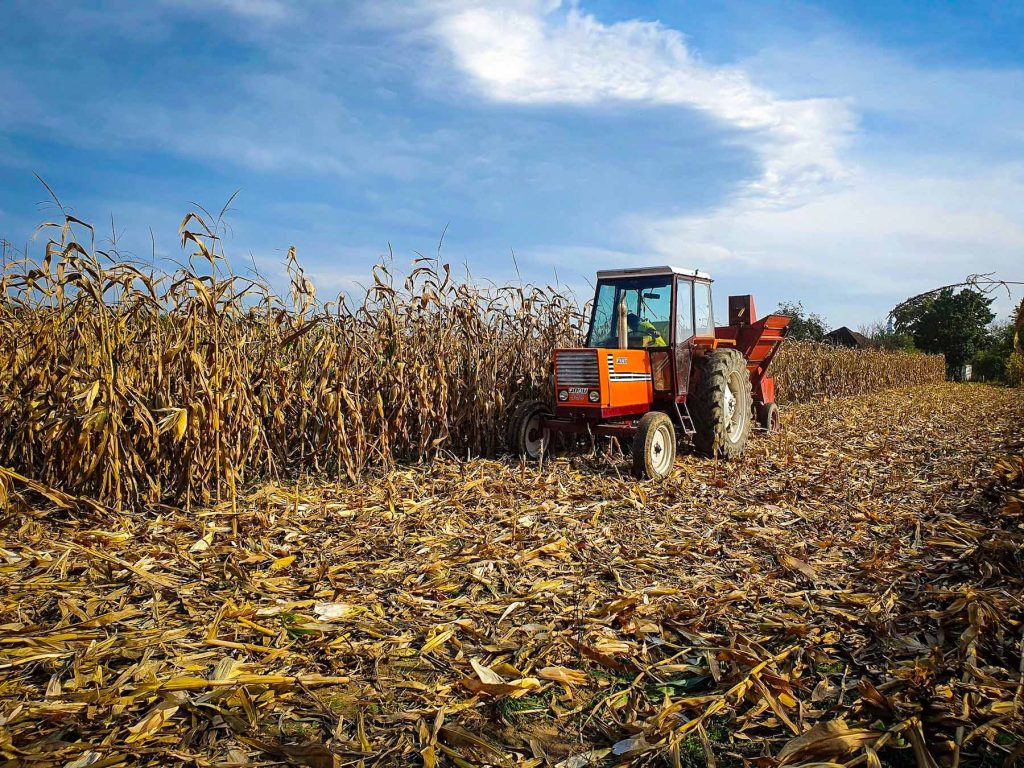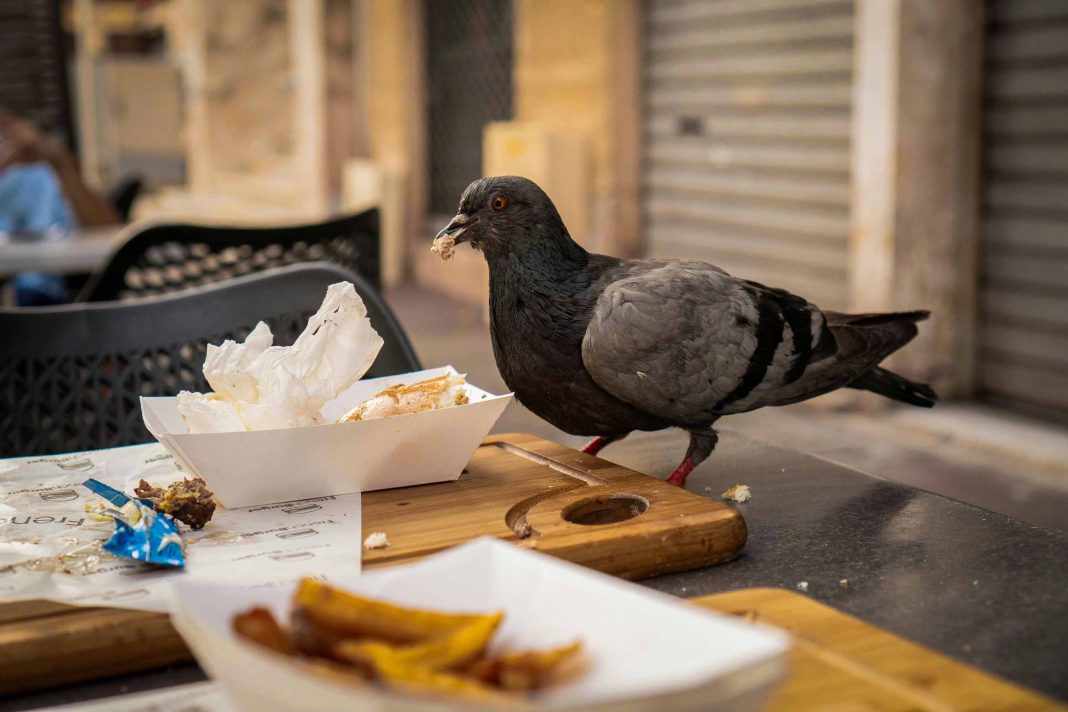We all need it, but many of us don’t have enough of it, and a lot of what we can get is bad for us. Up there with water and oxygen, food is one of the essential building blocks of life that nature has given us, yet somehow, we’ve managed to mess up. As urban populations swell, poverty continues to bite, and the climate collapses, the challenges we weave into the food web need special attention. We take a brief overview of the biggest challenges that a sustainable, fair, and decent system for food needs to sort out.
With their high concentration of human populations, cities are a ticking timebomb – unless we prepare, and prepare good, we could find ourselves falling short not only of decent nutrition, but enough foodstuffs to even put in our bellies.
With their high concentration of human populations, cities are a ticking timebomb – unless we prepare, and prepare good, we could find ourselves falling short not only of decent nutrition, but enough foodstuffs to even put in our bellies.
Fair Food for All
It’s already true for so many places. The UN reports that in 2021, almost 10% of the world suffered from hunger regularly and 2.3 billion (29.3%) were hit by considerable food insecurity.
Intensive farming should have rendered starvation a problem of the past, but distribution of increased yields is driven by commercial gain rather than equitable supply. So, while millions have no clue as to where their next meal comes from, citizens elsewhere take their pick from an impressive range of produce all year round.
A Damaging Demand
Industrial farming is a practice that’s now coming under more scrutiny, especially as people with an environmental mindset question the damage it’s claimed this does to the planet.
Soil – needed for growing crops or pasture for feeding livestock – degrades without natural processes for nutrient renewal and is caused by over farming. Depending on location, we compensate for this, by:
- Replacing natural nutrients with chemical fertilisers. Leeched by rain runoff, this causes phosphates to pollute waterways, destroying ecosystems.
- Leaving the baron patch of land to desertification, felling more rainforest to use as agricultural land until that too can no longer life, and the cycle starts over.
Soil degradation and forest destruction slash the volume of earth’s carbon sinks, exacerbating climate change. The resultant extreme weather – from droughts to flash flooding – endangers reliable food supplies. Cities, given the sheer number of mouths to feed there, have to acknowledge their part in this global catastrophe. Solutions are needed at a local level that send benefits rippling around the world, but in a way that does not undermine economies in communities and nations in the Global South that still rely on international trade for their survival.
Striking a balance will be a tough tightrope to walk.

Bowls & Basins
Climate change is not the only dramatic threat to food supply that defines our epoch. Global conflict is right up there too!
For example: Russia’s invasion of Ukraine has seen exports from one of the world’s biggest grain exporters disrupted. This especially has implications for countries in the Global South that heavily rely on this supply.
It’s predicted that water too will increasingly become a tool for hostility as some nations curtail river flows to squeeze peoples downstream; Indian and Pakistan, and Israel and Palestine being two contemporary cases. That could prove disastrous for food security as irrigation is interrupted leading to drought, crop failure, and widespread starvation.
As cities depend on rural geographies to produce the food that sustains them, it’s in the interests of municipalities to work with them to mitigate against disaster – natural and human-caused. To start, they should strengthen relationships extending far beyond urban limits and introduce diversity to supply chains – both could prevent food sources from being severed completely even if a single source dries up.
Meanwhile, Closer to Home…
But, as two-thirds of the human population will live in cities by 2050, urban places need to become more self-sufficient if they are to sustain resilient food supplies whenever trouble strikes.
Solutions are needed to produce evermore foodstuffs with limited space in city boundaries and in a way that does less environmental, social, and political harm.
Cities are currently too slow to adapt. There’s no urgency to identify spaces within the built environment that offer potential for urban agriculture.
Even when these can be found, they’re not likely to be large plots of open land. If they are – such as on the periphery or brownfield sites ripe for potential conversion – selling it to property developers for the big bucks is tempting for cash-strapped councils. Urban agriculture faces tough competition before it’s even got a foot in the door and even where it takes off, one study suggests that urban agriculture may only be able to return up to 3% of annual global food production – so can cities really feed themselves?
The Pressure of Urban Farming
Maybe, if we get more creative in using the space that’s available. Cities have an abundance of walls and roofs that can be repurposed.
Vertical farms and rooftop gardens are legitimate possibilities for growing locally but it would be naive to think we can just scatter some compost on a flat roof, plant some seeds, introduce irrigation, and reap the rewards. This needs architectural and political support, which is slow to catch up with the vision of pioneers.
Soil, water, and bio matter all add weight to a building. Structures need to be assessed for compatibility, and – in places where rooftop farming is already practiced – the need for reinforcing is not unusual.
There’s a significant cost to this. For those who can afford it, the savings of growing one’s own veg could eventually pay off, but this benefits wealthier groups able to spare the upfront capital to get set up. Poorer segments of society, however, are trapped in dependency of shop-bought goods; those with less disposable income spending more on essentials and tied to (inflating) market prices. To compensate, they may turn instead to unhealthy ultra-processed foods. Municipalities need to find ways to address this marrying of the income and health gaps, and experience tells us that healing social discrepancies is no mean feat!

Social Considerations
There are plenty of neighbourhoods that have successfully transformed patches of land into community gardens but in some cases, we’re warned the beautification this brings has prompted gentrification, pushing out long-term residents.
Policy level protections are needed for people and places experimenting with urban agriculture. This can get marred in slow-moving bureaucracy, though, especially as city officials are also likely to lack the relevant expertise about the practices to know what to implement.
So relevant knowledge and incentives for moving faster must be made clear. It’s likely to fall to activists and residents to push from the bottom up, and to provide the advice, guidance, and legal support where urban farming is in its infancy.
Good Grub? Don’t Bank on It!
Proactive top-down initiatives are welcome, but they must learn from disastrous experiences like the ill-fated EU policy of the early 1980s; this guaranteed dairy farmers a minimum price for the milk they produced, causing an explosion in production, which far exceeded demand and created metaphorical butter mountains and milk lakes – a wasteful surplus that spoilt.
Production must be linked to demand. Distribution has to be well coordinated. Decisionmakers, policy writers, and producers need to ensure foodstuff is affordable when it gets to market.
In the meantime, food banks are doing a lot of the heavy lifting. In America, 1 in 7 people rely on these donations for sustenance. The Trussell Trust – a UK charity working to combat hunger – claims this trend has arisen because “more people found their incomes did not cover the cost of essentials”.
But their presence in other regions is subdued. In early 2023, there were a mere 25 food banks across Africa; in 2009 there were only two – the original in Cairo and one in South Africa.
It would be wrong to see food banks as a sustainable solution though. Organisations like Food Banking Kenya and OzHarvest offer a more constructive model, working with the food chain to redistribute surplus to those who need it and do away with waste. But until we eliminate the reason city-dwellers turn to food banks – and increasingly donations of all kinds – structures that make them easy to set up, run, and supply should be made simple and supported.
Hold Yourself to High Standards
Household challenges persist too. Namely that of poor individual behaviours. Nudging could see citizens making more efficient use of their grub.
This requires change-makers to raise awareness of the extent food waste plays in global emissions and to convince people of better eating habits. That’s harder if the infrastructure is missing.
Deposits on bottles, for example, are known to encourage recycling. Enterprising municipalities could expand such a scheme to other forms of food packaging, but the closest this seems to come is stores that invite consumers to bring their own bags and boxes. This calls for self-will rather than systemic structure to raise engagement.
Better labelling could help shoppers make better choices about what they ingest too, but policy as yet does not lean on manufacturers to do the right thing.
Where this does exist already, unregulated claims, missing information – such as on Ultra-Processed Foods – and confusing traffic light systems are all baffling buyers as to what’s really good for them.
Just knowing whether the food we’re buying is from a sustainable source is just as confusing: there are so many labels – and so little understanding of what they mean – that only the very interested and self-informed stand to benefit.
Without a simplified, standardised, and intuitive system that we can ingest at a glimpse, this does little to improve how we make decisions, spend, and eat.

To the Meat of the Matter
A catch-all sustainable choice is to cut down on our meat consumption.
A report by the EAT-Lancet Commission supports the claim that eating 50 per cent less meat and sugar would provide significant health benefits for people and planet; health-wise, and because fruit, veg, and legumes – which replace the meat in our diets for the same nutritional value – have a lower carbon footprint.
However, our addiction to meat – or the cultural significance it has for some – makes persuading diners to make this change an uphill struggle.
An answer is needed for the question: how do we encourage the average shopper to put meat alternatives, vegan options, and more fresh produce in their basket?
That question is misleading – we’re starting at the wrong end of the food chain.
The real answer must span sectors – from agriculture to logistics to retail and various lobbies – which is a massive and intimidating task. It’s really bigger picture stuff – how do actors in cities realistically influence industries operating on a national and international scale?
Combined Purchasing Power – A Call to Action for City Authorities
At least local administrations could sound the alarm and influence change by reviewing procurement processes.
Schools, prisons, and council cafeterias count for a lot of meals in a day. Stretched budgets usually trap decision-makers into settling for the cheapest provider rather than what might be the better option. How city leaders can align their priorities and resources is yet to be seen in most places.
At least if we produce food close to market, the cost savings could be passed on to buyers – not least in reduced transport needs – which for an organisation the size of an entire city council could be considerable.
There are advantages of this also for animal welfare. Animal rights groups protest the practice of live transportation – creatures subjected to long journeys cramped in uncomfortable metal cages.
Yet, this revisits a familiar conundrum: municipalities need to find the space for crop production and where they can raise and slaughter animals in urban or peri-urban areas.
So for now, many cities continue to struggle with the shift to more sustainable food practices – all the way from farm to fork – even where there’s a recognition that this is necessary for reenforcing resilience.
Reassuringly, there are cities addressing each of these issues, and the stories and guides on CityChangers’ will share these real-life examples so that others may see how – with the right motivation and multi-disciplinary cooperation – success is very much beyond any doubt.
Further Reading
Phew! With a grasp of the long list of challenges under our belt, we can turn out focus to getting them solved. To start you on your way, we’ve compiled an easy-access introduction to changing the way we eat, urban agriculture, and reducing food waste. Head here and prepare to take action…


